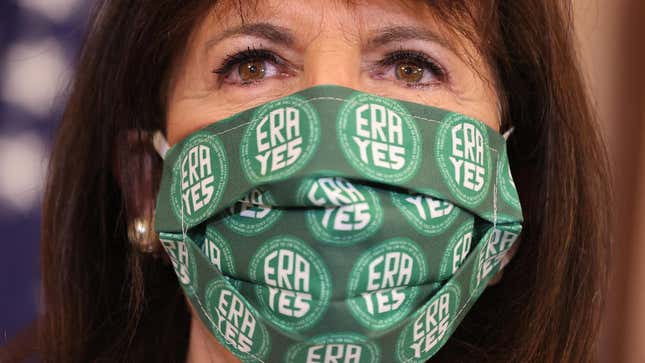The Equal Rights Amendment Just Needs One More Signature
The president doesn't even need to sign it, just this one woman...
NewsPolitics

Since Virginia became the 38th state to ratify the The Equal Rights Amendment (ERA) in 2020, its fate has languished in courts and on the congressional cutting room floor. But it’s neither the legislative nor the executive nor the judiciary that hold the fate of constitutional gender equality; in fact, the ERA needs just one more signature to take effect. The would-be 28th Amendment to the U.S. Constitution is waiting for the National Archivist to certify and publish those 24 words as a new amendment to the Constitution.
The National Archivist? Like from the National Archives? Yes, exactly. Currently Debra Steidel Wall is the acting archivist at the archives. Unlike her predecessor David S. Ferriero, who blocked the ERA certification, Steidel Wall has the opportunity to make history.
The constitutional amendment process is rather straightforward: An amendment must be passed by two-thirds in both houses of Congress and ratified by three-fourths of the states (38 currently). There are no other steps. The president doesn’t even have to sign it. “If you’re a strict originalist, that’s it for the amendment process,” Kate Kelly, lawyer, ERA advocate, and author of Ordinary Equality: The Fearless Women and Queer People Who Shaped the U.S. Constitution and the Equal Rights Amendment, explained to Jezebel. “It’s a states’ rights issue.”
However, Congress added a statutory requirement, and this is where we return to Steidel Wall. “The archivist certifies that the states who ratified it ratified it and publishes it. That’s the way for everyone to know that when you print new versions of the Constitution it has 28 amendments,” Kelly said. “It’s a purely ministerial duty. The archivist was never intended to be an arbiter.”
-

-

-

-

-

-

-

-

-

-

-

-

-

-

-

-

-

-

-

-

-

-

-

-

-

-

-

-

-

-

-

-

-

-

-

-

-

-

-

-








































